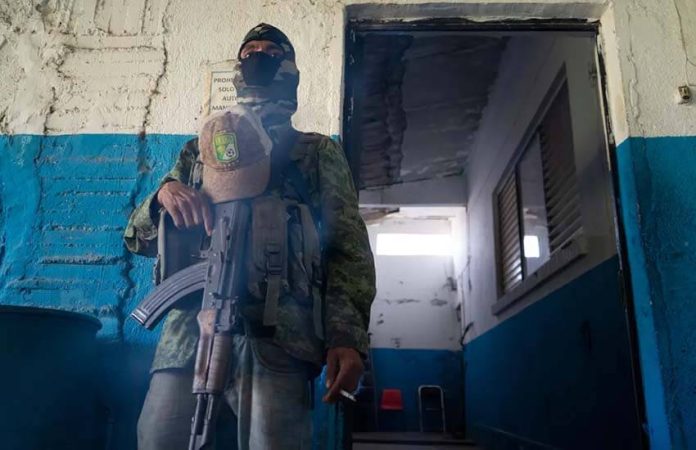This article was originally published here by the International Crisis Group.
In December 2006, Michoacán became ground zero for the latest round of the war on drugs in Mexico. The president at the time, Felipe Calderón, sent thousands of troops to this state in central Mexico, bordering the Pacific coast, and promised swift victory. But the offensive soon started to falter, inflaming a conflict that has only grown more intractable under each of Calderón’s successors.
Fifteen years ago, one group dominated the landscape of illegal armed groups in the state. Today, at least 14 illegal armed outfits have carved up power, political sway and territories among them, each one digging in too deep for its competitors to oust it completely. The result has been a state of perpetual low-intensity armed violence. A viable strategy to reduce this violence has yet to be found. Last year alone, more than 2,700 died in the bloodshed. And civilians increasingly find themselves the victims of volatile front lines, with thousands displaced in 2021.
Crisis Group’s Mexico analyst Falko Ernst has been documenting the changing face of Michoacán’s conflict for the past decade. In November 2021, he returned to Michoacan’s Tierra Caliente region, the heartland of organized crime in the state, to catch up with old acquaintances and spend time with new ones. Civilians, activists, police, government officials and members of three different illegal armed groups talked with him about their everyday lives and their expectations for the future.
War has changed
Tight enough to provide security but sufficiently loose to preclude eavesdropping, a circle of 20 men has been set up around us. Plastic chairs and, uncharacteristically, camomile tea have been laid out for our conversation on this chilly, dimly lit village plaza in late November 2021.
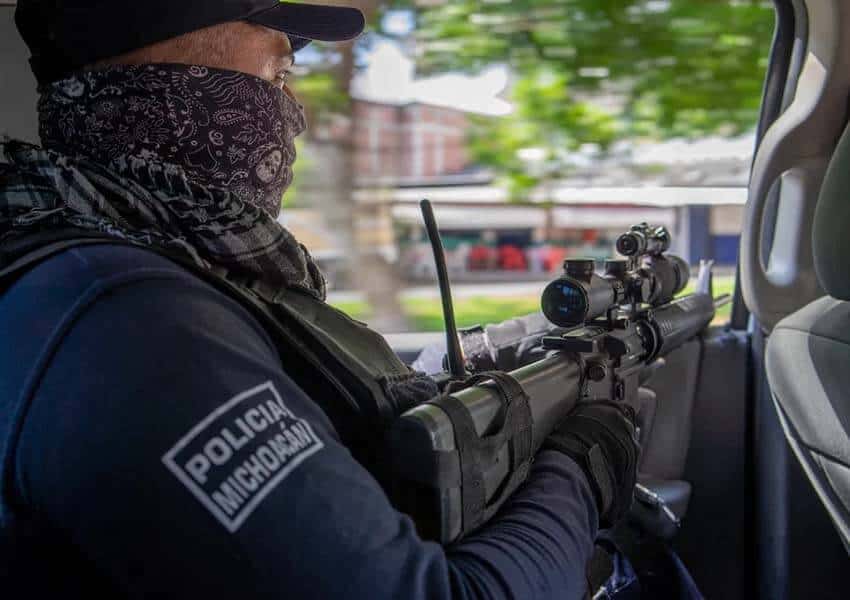
“War has changed,” said Pelón, the head of one of Michoacán’s illegal armed groups, whom I met that night. Barely 30 years old, he sported custom-made baseball caps and hoodies, in contrast with the more sober apparel of many of his counterparts. He pointed to his foot soldiers, dark silhouettes holding Kalashnikovs. The AKs, he said, are still standard-issue. But recent years have seen a veritable arms race, he went on.
“Technology has become central to all this,” he said, describing how Google satellite imagery has strengthened his grasp of the terrain of battle and allowed him to know his troops’ location at every turn. But the real push for innovation, he said, had been forced upon him and his local allies from outside.
Their collective enemy is the Jalisco Cartel New Generation, a criminal conglomerate that has forged an aggressive multi-front campaign for national dominance by aiming to outspend and steamroll local opposition. At first, it gained the upper hand over smaller rivals in Michoacán.
“No matter how many we killed, how many weapons we took, how many vehicles we destroyed, they always kept coming back with more… and at first they were getting the better of us.”
The Jalisco Cartel also took advantage of superior technology, including its so-called “monsters,” increasingly sophisticated homemade tanks built to resist high-caliber gunfire – as well as C4 explosive-equipped drones. But, Pélon said, getting their hands on both these machines and reverse-engineering them has enabled them to draw even.
He said that each local group now had dedicated tank welders as well as drone builders and pilots on its payroll; like their enemy, they have learned to assemble makeshift land mines, the latest means of deterring hostile intruders.
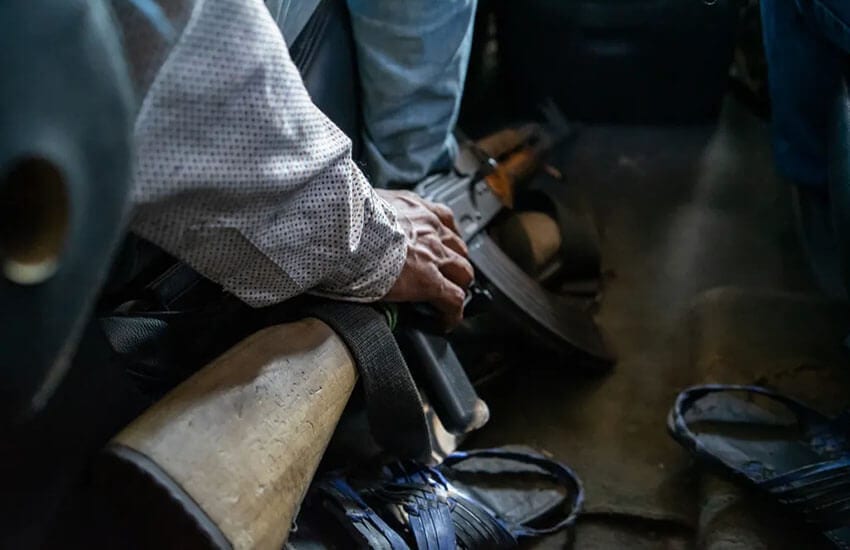
“We’re at the same level now,” Pelón said, joining together his right- and left-hand fingertips to make the point.
A costly gridlock
The gridlocked conflict has brought a war of attrition to Michoacán. Bearing the brunt have been villages situated on the shifting front lines. According to Gregorio López, a Catholic activist who has been organizing humanitarian aid for those staying put while also backing the claims of those seeking asylum in the United States, more than 30,000 fled their homes in 2021 alone (the Michoacán state governor has claimed the number is 90% lower).
One of the main causes of displacement is the suspicion among armed groups that locals left behind could be passing information on to enemies. “They came to my home,” said one man whose village was seized by the Jalisco Cartel following weeks of shootouts, “and demanded to check our phones.”
When the gunmen spotted seemingly compromising messages on his daughter’s WhatsApp — merely a statement of fact that “the Jaliscos” had mounted barricades around the town — they immediately issued an eviction order. “They gave [the daughter and her husband] two hours to pack up their things — or else,” he said in the matter-of-fact tone of someone long used to accepting the rules essential to survival in the Tierra Caliente.
The man also abandoned his home soon after, loading what he could onto his pickup truck to resettle in another village 10 kilometers away — far enough to avoid the front line. What prompted him to leave, he said, was not so much the fear of being caught up in the cleanup operations of the armed group, including executions of those suspected of being loyal to the United Cartels, an alliance of Michoacán-based groups fighting the Jalisco Cartel. It was his livelihood being undercut by new borders being drawn in the sand.

Strategic preferences
Pelón claims these displacements have been a strategic blessing to him and his allies. “The truth is, all this has done us a big favor,” he said, explaining how sustained media coverage of the human costs of Michoacán’s conflict had forced the hand of the federal government. Since assuming office in late 2018, the government has asserted that Mexico is on track for better days. To protect this narrative, in late 2021, the government increased the number of troops deployed to Michoacán to 17,000. This followed a familiar pattern of state security responses being prompted by backlash in public opinion.
But for Pelón this has meant reinforcements, rather than enemies. While visiting the state, I spoke to commanders and fighters from three different illegal armed groups. They differed about the degree to which soldiers and their non-state armed outfits from Michoacán had teamed up. Some spoke of full integration in battle. Others of merely coordinated efforts. But all agreed that a common front existed, with the shared goal of pushing back the Jalisco Cartel.
Armed hostilities between the two sides have lately been concentrated along a front line within Michoacán that runs parallel to the border with the neighboring state of Jalisco to the north. Farther inland, however, the federal government’s alleged strategic affinities with certain outfits — which the government dismisses, having officially declared corruption and collusion a thing of the past — have afforded many of Michoacán’s armed groups a calm not seen in years. They have been allowed to regroup and strengthen their grasp over their home territories.
“They [the military] haven’t messed with us here for months,” said one Knights Templar commander as he and his crew were enjoying drinks and pork stew at a religious celebration in a remote Tierra Caliente village, live ranchera music blasting away in the background.
In the years that followed, internecine fighting between these splinters ensured the state suffered continuing bloodshed. But for now, if only briefly, this internal war has been largely put on ice, with the shared outside threat posed by the Jalisco Cartel once again causing a coalition of local armed outfits to assemble.
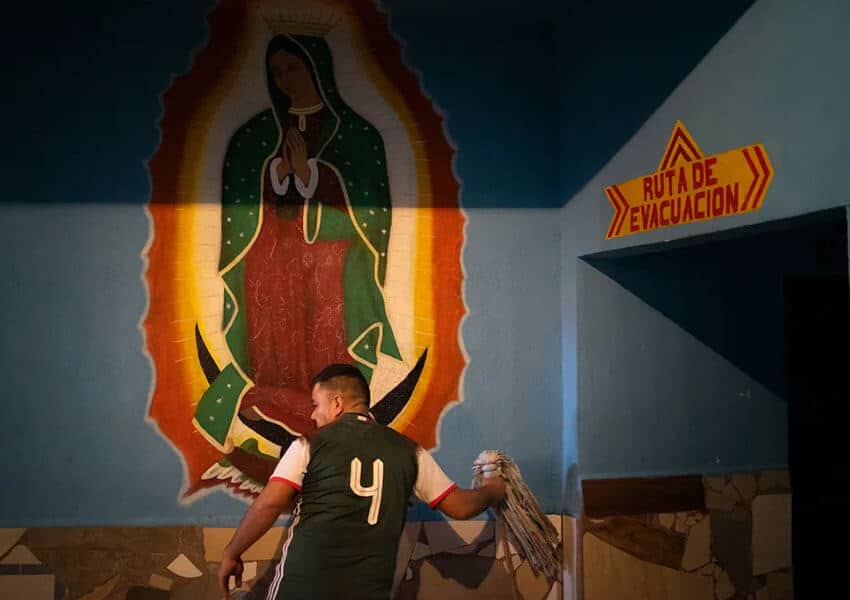
But in my conversations with members of these groups, none expressed any illusion that the pact was born out of anything but necessity — or harbored a shred of hope that it would survive were the Jalisco Cartel’s offensive to vanish. “There are things that can’t be forgiven … or overcome,” said the Knights Templar commander.
To illustrate his point, he explained how the new alliance meant he was now putting on a show of mutual respect with a former arch-enemy, the same person who had killed scores of his “boys” in ambushes and taken his family member hostage. Lingering grief, personal vendettas and the thirst for expansion could conceivably be kept in check by an authority able to impose rules and cement spheres of influence. Yet with power evenly distributed among too many groups, no such order currently seems feasible. Nor did anyone appear willing to return to centralized leadership.
Arlo, the second-in-command of an armed outfit aligned with neither the Jalisco Cartel nor the United Cartels, spoke of tentative attempts by the federal government to pacify Michoacán. “A general came down from Mexico City to see me,” he said as we munched on tacos in the communal kitchen of a village controlled by his group.
What the federal envoy brought with him was not so much a concrete plan but a query as to whether Arlo would be willing to sit down and talk peace with his opponents. Just as others would say when I asked the same question, his answer was that he would.
“All we demand,” he said, “is that our borders be respected … and that we all stick to our own areas.” However, he quickly added, a negotiated settlement along these lines, for now, appears impossible.
The armed groups’ subsistence hinges on their ability to extract rents from the Michoacán economy’s four principal cash cows, chiefly through protection rackets. “The truth is,” he said, “that everybody wants in on the avocados, the lime, the port [of Lázaro Cárdenas, key for importing illicit substances] and the [iron ore] mines. Those cut off will continue pushing. They just have to.”
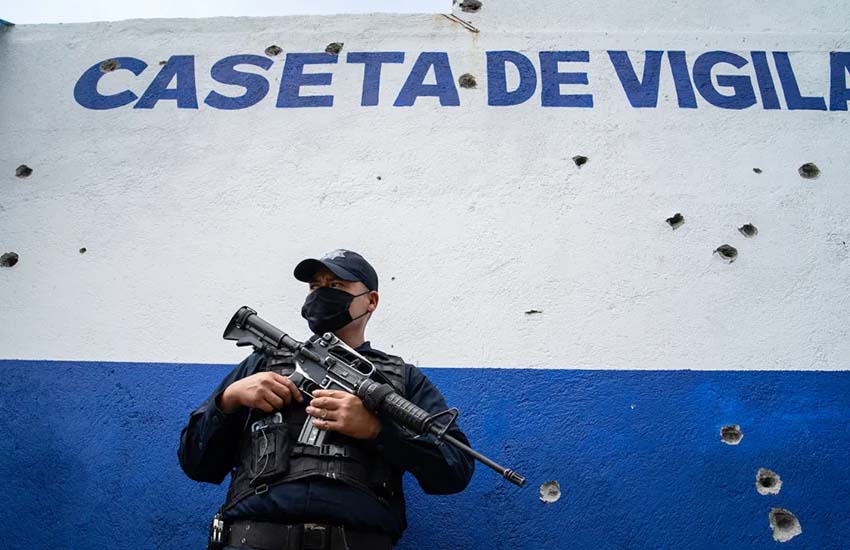
Border skirmishes
“Make it quick, they’re shooting here,” Arlo shouted after me as I made my way from his car to talk to state police. Here, at the outer fringes of his group’s territory, the dividing line between state and non-state forces appeared to have collapsed.
To the observer, but for the uniforms, one was indistinguishable from the other, and police officers were in effect guarding Arlo’s territory against the incursions of a hostile armed outfit.Border skirmishes
Despite his wry sense of humor, forged during three decades in the thick of conflict, it was clear on this occasion that he was not in jest: there were walls riddled with bullet holes. Three weeks prior to my visit, Arlo’s band had taken a bite out of an enemy group’s territory. Right after the fighting stopped, they brought in construction workers to erect a fortín, a delta-shaped fortification with 6-meter-high walls promising protection against any backlash.
It proved a sound investment. Two weeks later, contras, or enemy combatants, opened fire from amid the surrounding hills’ lush vegetation.
“In one of these attacks, they’ll take down five of yours before you even figure out where it’s coming from,” explained the ranking officer on site. That time, however, all they caused was damage to the installations.
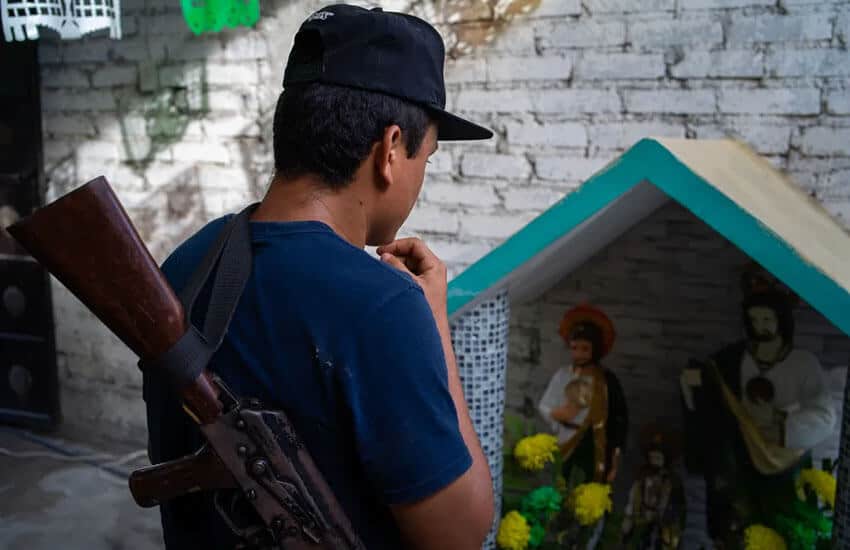
Domestic and international media have extensively covered the violent spectacle along the relatively accessible, clear-cut front line dividing the Jalisco Cartel from the United Cartels along the Jalisco state border, 60 km away. But everyday hinterland skirmishes such as this one all but escape the limelight, even though they are intimations of the shape tit-for-tat hostilities among Michoacán-based groups are set to take once the outside threat of the Jalisco Cartel wanes and internecine fighting resumes.
The fact that they remain largely invisible is at least in part by design, as armed groups may look to avoid the type of public scrutiny that can upend arrangements between state and non-state groups.
Divisions between state and non-state groups are often wafer-thin in Mexico. Striking understandings with police and military can, for the likes of Arlo, make the difference between survival and withering.
Keeping this in mind, in the run-up to the next offensive against the same enemy group days later, Arlo had first made a stop at the local precinct, sitting down with the police to make the final polishes to the plan of attack.
Together they agreed that those in uniform would enter hostile territory first; closely behind would follow Arlo’s men, ready to “sweep” the area. The National Guard, the federal government’s militarized flagship security force with whose local commander Arlo said he had achieved amicable terms, would remain on alert but not get involved unless things went wrong.
An hour later, around 70 combatants, mostly youngsters in camouflage but with red ribbons tied around the tips of their semiautomatic weapons to avoid friendly fire in the pending battle, came together in a mango orchard five kilometers from the border with the enemy group. As they started to board a procession of pickup trucks and armored SUVs, he made clear that no video or photo was to be taken, let alone uploaded to social media.
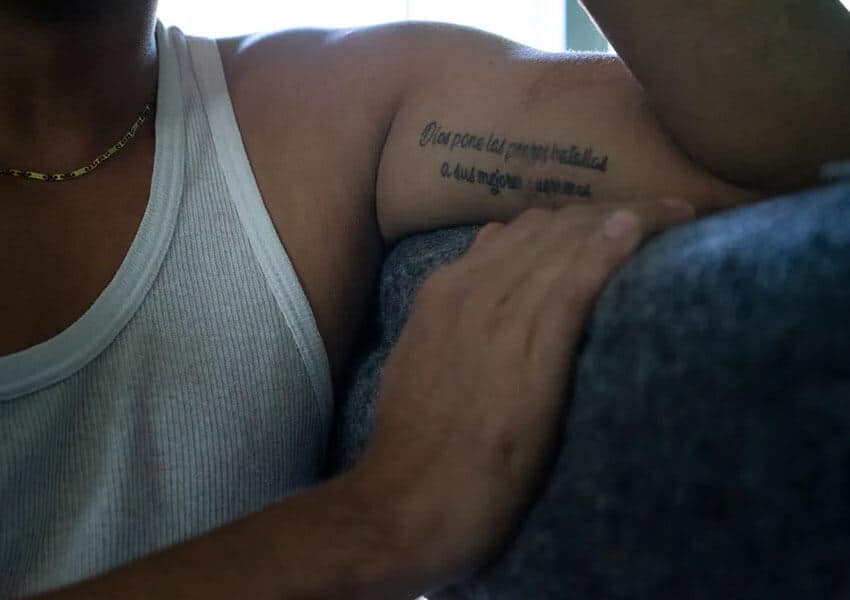
Like other armed groups, he preferred to avoid the type of public scrutiny that can upend delicate arrangements with state actors.
Human refill
That day, Arlo’s side carved another chunk out of their adversary’s turf without suffering casualties (the same could not be said of the opposition). Death and injury due to violence is commonplace in Michoacán, a state that in the past decade has seen a daily average of 5.1 persons killed.
It is predominantly young men who “provide the dead,” as locals phrase it. Out of the 369,150 homicide victims in Mexico from 2007, the first full year of former President Calderón’s military campaign, through to June 2021, 193,302 — or 52% — were no older than 34 years, according to Mexico’s national statistical body INEGI.
I spoke to Cristián, one young sicario trying to avoid becoming part of this statistic at a local rehabilitation center — armed group membership and methamphetamine consumption often go hand in hand. In a medical examination room that doubles as a conversation space, he talked about his path from life as a former self-described “gangbanger” in a major California city to Michoacán’s front lines, including a training and initiation regimen of appalling brutality.
Those that fail to jump through these hoops, according to Pelón, the young armed group leader, are easily replaced. “There’s always human refill,” he said.
Just like the others who told me their story that day, including a kid who started out as a sicario when he was 12 years old, tears welled up from underneath his steely facade as he recounted his story. “I’m so sorry,” he said, “but I’ve never told all this to anyone.”
He, alongside others in the rehabilitation center, put their hope in programs that might eventually pave their way back to a peaceful existence, potentially by offering legal work in exchange for taking part in transitional justice initiatives designed for young offenders by local civil society.
But an official in charge of public security in a major Tierra Caliente town told me, “None whatsoever currently exist.”
Changing that, I was left thinking as a few days later I sat on a bus leaving the region, would be a worthy way to begin interrupting the region’s continuing bloodshed.
The original text of this article was adapted minimally for grammar, punctuation, style and layout.
